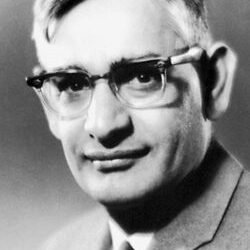Introduction
The Third Battle of Panipat, fought on January 14, 1761, was a decisive and catastrophic conflict between the northern expeditionary force of the Maratha Empire and the invading Afghan Durrani army led by Ahmad Shah Durrani, aka Ahmad Shah Abdali. Taking place near Panipat in present-day Haryana, this battle involved over 125,000 troops and has one of the largest fatality counts for a single-day classic formation battle in the 18th century. The Maratha forces were decisively defeated, marking a halt to their northern expansion and shifting the power dynamics in India during the Mughal decline era.

Background and Political Context
The Mughal Empire was in steady decline after Aurangzeb’s death, fracturing central authority and creating vacuums filled by regional powers like the Marathas in the west and Ahmad Shah Durrani commanding Afghan forces. The Marathas, under Sadashiv Rao Bhau, had extended their influence to Delhi and northwestern India and faced growing resistance from various factions allied to the Durrani Empire, including the Rohillas and Nawab of Oudh.
Tensions escalated as Abdali’s forces advanced southwards from Afghanistan into northern India with the intention of plundering wealth and asserting control. After a series of skirmishes and the siege of Panipat, both armies readied for a decisive confrontation.
Forces and Commanders
The Maratha army comprised approximately 45,000 troops, mostly cavalry supported by elite musketeers commanded by Ibrahim Gardi. Commanders like Damaji Gaekwad and Malhar Rao Holkar held flanks, while Sadashiv Rao Bhau directed the army with defensive artillery formations.
Ahmad Shah Abdali’s force numbered around 60,000, including elite heavy cavalry and infantry, alongside allied forces of Rohillas and troops from the Oudh state led by Shuja-ud-Daula. Abdali’s army was well-organized, with heavy cavalry positioned centrally and allies on the flanks to maintain combat cohesion and discourage defections.
Course of the Battle
The battle opened with artillery exchanges. The Maratha artillery was initially effective but struggled against the Afghan camel-mounted artillery, which inflicted severe casualties. Maratha cavalry mounted powerful charges but could not sustain their initial momentum.
Critical moments included the fall of Ibrahim Gardi and the collapse of several Maratha flanks under repeated Afghan attacks. The Afghan forces successfully isolated key Maratha units, causing widespread panic. The Maratha leader Sadashiv Rao Bhau was seriously wounded and killed, leading to the disintegration of their forces.
Casualties were massive: estimates suggest around 30,000 Maratha soldiers were killed in combat, with many non-combatants either killed or enslaved during the battle’s aftermath. Despite victory, the Afghans suffered losses and were unable to maintain a lasting presence in northern India before retreating to Afghanistan.
Aftermath and Consequences
The Third Battle of Panipat ended the Maratha push into northern India for roughly a decade, weakening them militarily and politically. It temporarily elevated Afghan influence but did not translate into permanent governance, leaving northern India fragmented and unstable.
The battle restored nominal Mughal authority under Emperor Alam II, but the empire remained weak. The political vacuum led to the rise of regional powers and provided the British East India Company an opportunity to expand control in the decades that followed.
The Marathas, though severely weakened, eventually rebounded under Peshwa Madhavrao, who reconsolidated much of their former power by the early 1770s. The conflict thus highlighted the dynamic and volatile nature of 18th-century Indian geopolitics, with long-term implications for colonial ascendancy.

Conclusion
The Third Battle of Panipat was a watershed moment that abruptly halted Maratha expansion and redefined power relations in 18th-century India. One of the bloodiest battles of the era, it devastated the Maratha confederacy but did not result in lasting Afghan control. This battle symbolized the fragmentation of the Mughal polity and the looming entry of European colonial powers, marking a turning point in Indian history’s transition from medieval empires to colonial modernity.




